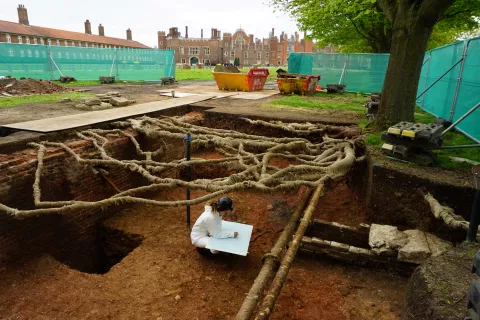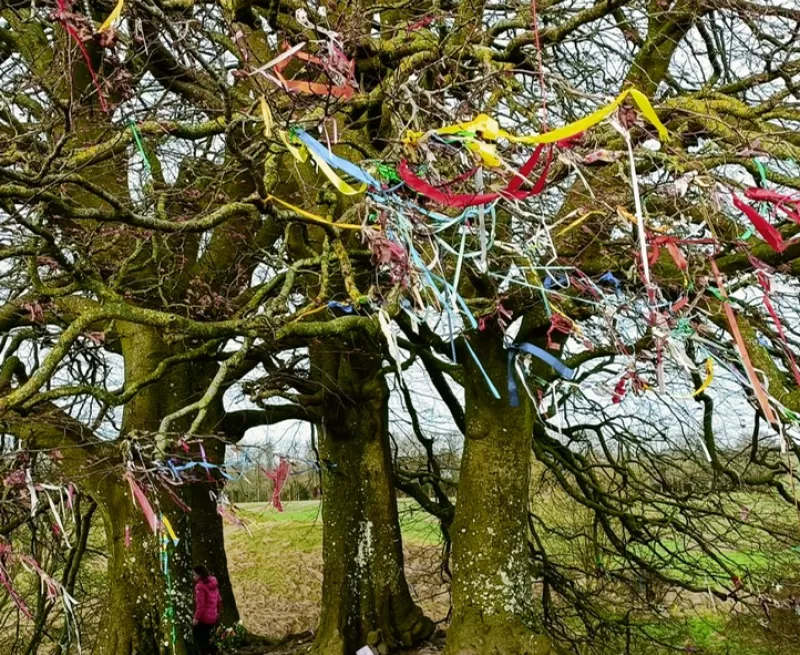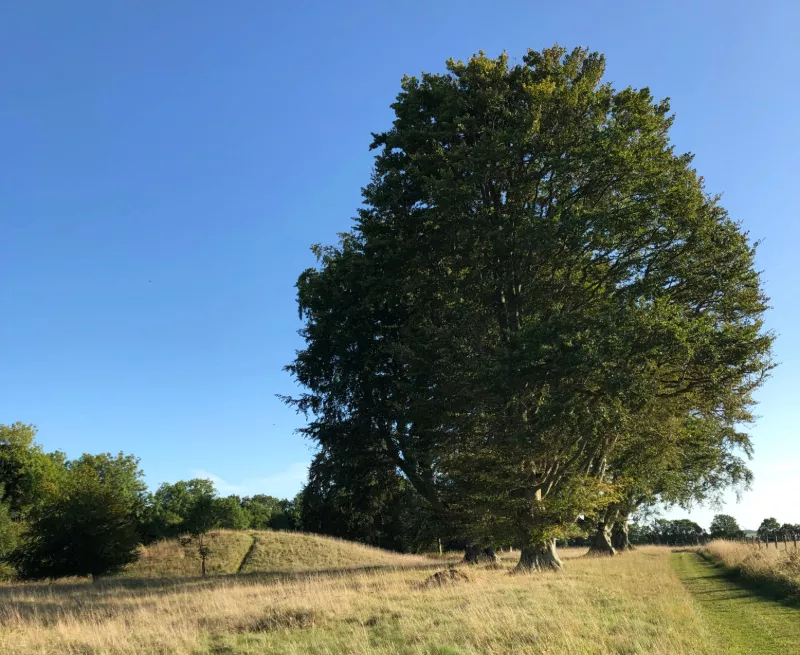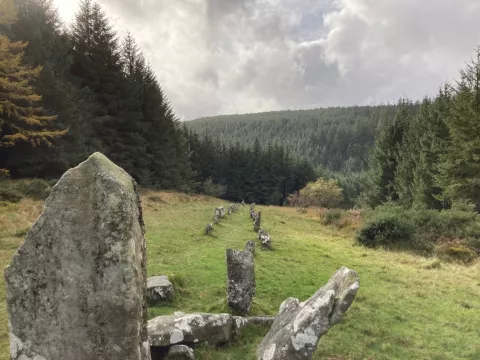
The Forestry Commission’s Tree roots and archaeology project is a very welcome development and a crucial step in addressing the complexities surrounding land use, especially considering the government’s ambitious and legally binding tree planting targets for increased carbon sequestration. Made possible thanks to funding from the Nature for Climate Fund, the project sets out to collate and objectively review the existing evidence and industry knowledge to advance our understanding of the interactions between tree roots and archaeological remains. It will produce a report, evaluative framework, and the design of a fieldwork project to apply the findings. These outputs will provide a valuable new resource to inform decisions about tree planting schemes where heritage assets are present, at a time when the woodland creation rate is increasing. The success of the project will depend, among other factors, on archaeology and forestry professionals sharing their knowledge and expertise with us. We would love it if you got in touch with us with your experiences and suggestions (see details below).
As reflected in the ongoing policy debates surrounding climate and nature restoration policy, the actions required to facilitate nature recovery and counter the effects of climate change are profound and extensive. Land is limited and the demands that are posed on it by society’s needs are many. But the level of land use change[1] (not to mention landscape change!) required by tree planting targets to help mitigate the impact of climate change adds complexity to an already incredibly sensitive topic.
The seven pillars of the UK Forestry Standard -biodiversity, climate change, historic environment, landscape, people, soil, and water- ensure that forestry delivers other benefits to society and it is therefore important that the evidence on which decisions are made is comprehensive and up to date. Increased levels of tree planting raise the challenge of how to balance more trees with protecting and preserving monuments, landscapes and archaeological features that compose our historic environment. Tree roots, changes in the chemical composition of the soil, water levels, and forestry operations can all have an impact. Tree roots and archaeology will support the Forestry Commission and forestry professionals in navigating these challenges moving forward by developing a framework for understanding the sensitivity of different types of archaeological sites to the environmental changes brought about by trees.
[1] According to the Climate Change Committee’s report Land use: Policies for A Net Zero UK, the UK needs to plant 30,000 hectares of new trees every year in the run up to 2050 and increase beyond that. This requires over 20% of agricultural land to be used for tree planting (https://www.theccc.org.uk/publication/land-use-policies-for-a-net-zero-uk/).
Archaeologists or foresters, we all care deeply about the natural and human environment around us; we want to understand how it came to be and how we can preserve and improve it for the benefit of future generations. This project is a great opportunity for us to work together.
Our team at Oxford Archaeology is hugely excited about this project. It is a fantastic opportunity for the two sectors, forestry and archaeology, to work together on such an important issue. While our work is largely focused on the past, we are committed to engaging with communities and reaching out to all parts of society to help address the challenges of the present. This is true for all archaeology practitioners but is particularly important to Oxford Archaeology as a charity with an educational purpose. We take our contribution to net zero and nature recovery efforts very seriously and therefore aim to complete the project with a better understanding of what tree planting and climate change mitigation require of us as a sector. People working in forestry and archaeology are incredibly passionate about their work and the object of their care; as trees and archaeology and heritage are so often intertwined in the British landscape, this project will no doubt result in closer relationships between archaeologists and forestry practitioners based on common objectives.
The project is guided by an Advisory Board of senior academics and experts, selected due to their exceptional knowledge of tree studies and tree roots in archaeology, as well as their wider experience of working at the interface between archaeology and ecology. The Board will continue to provide valuable insight throughout the project.

The project involves several phases and outputs. Firstly, a literature review will be prepared that will provide an overview of existing research which examines interactions between tree roots and archaeology. The literature review will identify gaps in the evidence and source materials for the subject that may be addressed moving forward. Following, the research and stakeholder engagement phase of the project will be guided by the literature review findings. Heritage and forestry professionals, organisations and bodies from different regions of England will be consulted, in order to capture data for a variety of habitats, landscapes, archaeological features and archaeological sites. The consultation will include gathering diverse evidence and experiences of archaeological fieldwork that demonstrate interactions between tree and shrub roots on earthworks and buried archaeology. A report will be produced which details the above phases, and also includes an evaluative framework for tree species relative to site and soil types. The evaluative framework will underpin further understanding of different tree species and tree roots within different archaeological contexts. Additionally, the report will present a proposal for a future fieldwork project, which will be focused on ground-truthing the interactions of tree roots and archaeology.

This project will inform significant advances in both archaeological knowledge and forestry practice concerning tree roots and archaeology. Developer-led archaeology and academia produce huge amounts of new archaeological data every year which is dispersed across organisations and institutions, making it difficult to see the full picture of how trees and archaeology interact. We are now collating relevant evidence with the collaboration of colleagues across the sector, as well as academia and heritage organisations. This approach will improve our understanding of the interactions between tree roots and archaeology and provide better, more up-to-date advice about how archaeological resources and tree planting schemes may be appropriately managed together.
Archaeologists or foresters, we all care deeply about the natural and human environment around us; we want to understand how it came to be and how we can preserve and improve it for the benefit of future generations. This project is a great opportunity for us to work together. We encourage you to get in touch with us to share your experiences of encountering archaeology during your work, as well as any thoughts about how we can ensure this project addresses your questions and provides useful advice for the future.
If you want to get in touch, email us on communications@oxfordarchaeology.com

